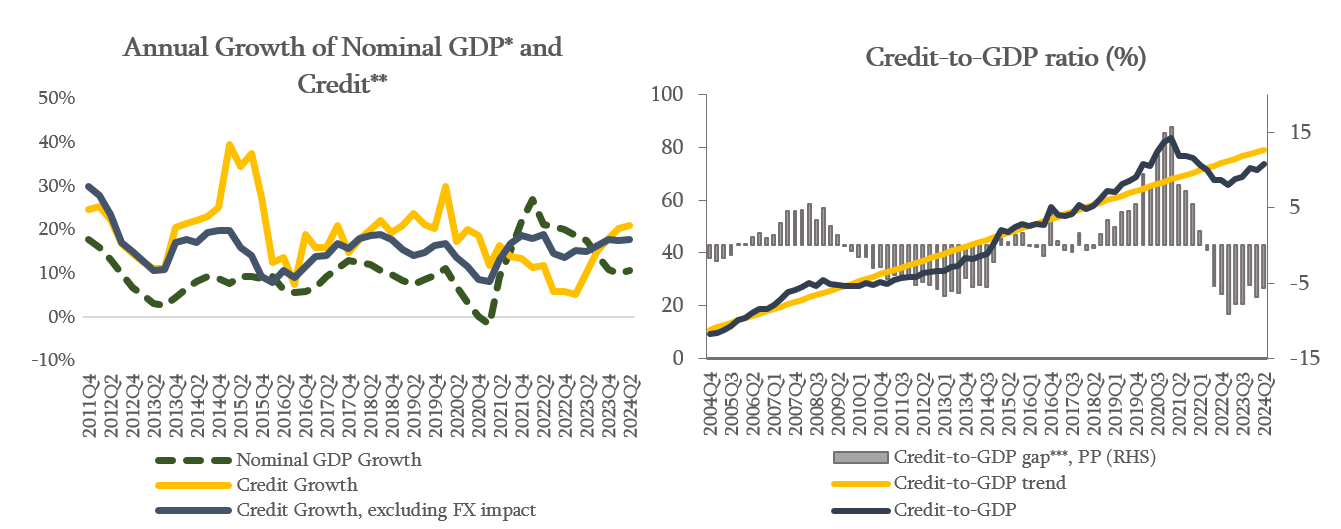
Financial Stability and Monetary Policy Committees’ Decision
The NBG publishes the 2024 Financial Stability Report. It analyzes the vulnerabilities and risks in the financial system with a focus on the medium and long-term perspectives. The report also reviews the structural features of the financial sector and key aspects of the Georgian economy that are of importance for financial stability. Additionally, the report offers an assessment of external sector, household and corporate sectors, and real estate. The report provides a detailed overview of the financial sector and presents the analysis of the resilience of the financial sector. Additionally, it reviews the measures implemented by the NBG to ensure financial stability and evaluates their impact. In particular, it reviews macroprudential measures aimed at safeguarding the financial system as a whole and microprudential measures designed to strengthen individual financial institutions.
According to the NBG’s Financial Stability Committee’s decision, the cyclical component of the countercyclical capital buffer remains unchanged. As of August 2024, banks maintain healthy capital and liquidity indicators. In August 2024, annual growth of credit portfolio, excluding the exchange rate effect, amounted to 18.6%, which is mainly driven by growth of business loans. In the second quarter of 2024, credit-to-GDP ratio remains below its long-run trend, however, the gap continues to decline. It should be noted that strong economic activity in the first two quarters of 2024 slowed down the convergence of credit-to-GDP ratio to its long-run trend, however, according to the committee’s evaluation, with the sustained credit activity and gradual normalization of economic growth, the credit-to-GDP ratio is expected to converge to its long-term trend by the end of the year. Therefore, at the current stage, there is no need to change the cyclical component of the countercyclical capital buffer. Moreover, commercial banks continue accumulating the neutral component of the countercyclical capital buffer. To ensure a consistent approach, the committee considered it appropriate to extend the principle of gradual accumulation of countercyclical capital buffer to microbanks as well.
Source: NBG; Geostat
* Nominal GDP growth reflects the YoY GDP growth of the last 4 quarters.
** Credit includes loans directly issued by commercial banks and microfinance institutions as well as bonds issued domestically by the non-financial sector.
*** Credit-to-GDP gap is the deviation of Credit-to-GDP ratio from its long-run trend. The trend is estimated using HP filter in line with the Basel recommendations
The National Bank of Georgia continues monitoring the country’s financial stability and assessing domestic and foreign risks. If necessary, it will use all available instruments to minimize potential risks. The Financial Stability Committee’s next meeting will be held on November 27th, 2024.
